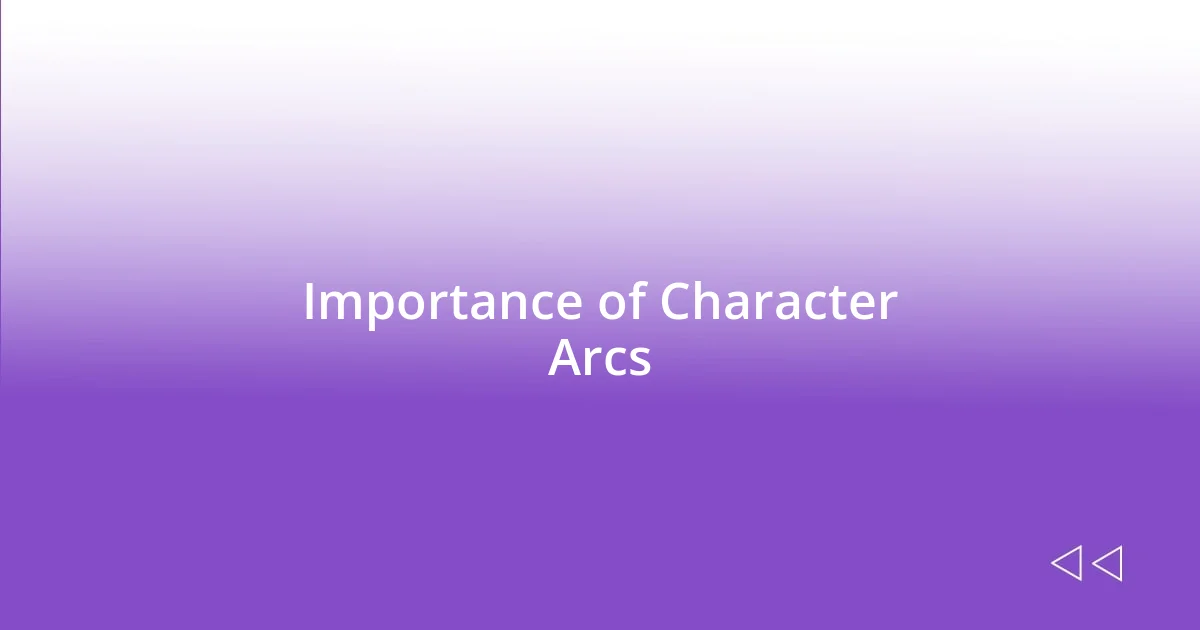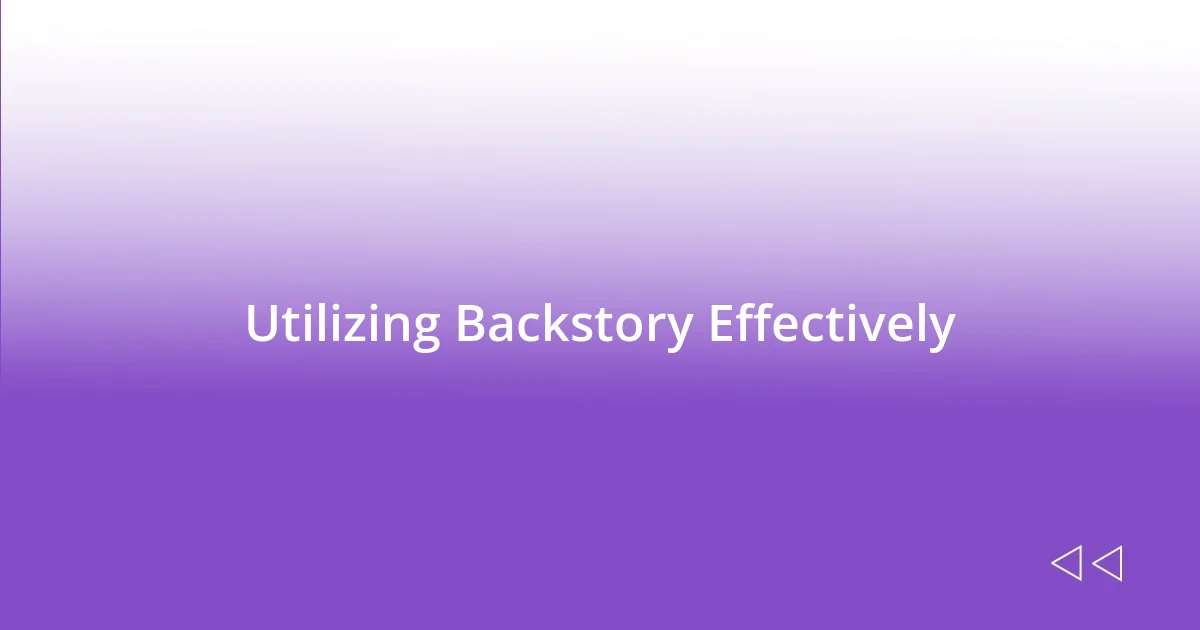Key takeaways:
- Character development techniques like backstory, dialogue, and arcs are crucial for creating relatable and multi-dimensional characters.
- Internal conflict, stemming from opposing desires and moral dilemmas, enhances character depth and fosters reader connection.
- Effective critiques of character development focus on authenticity, pacing, and the importance of subtext to enrich storytelling.

Understanding Character Development Techniques
Character development techniques are essential for bringing depth and authenticity to a story. I remember working on a character who struggled with trust issues. It dawned on me that by using backstory exploration, I could reveal her past traumas, which shaped her present reactions. Isn’t it fascinating how our experiences weave into the fabric of who we are?
Another effective technique I found invaluable is dialogue. In my own writing, I’ve observed that the way characters communicate can reveal their personalities and relationships. Think about a time when you had a tough conversation with someone. Wasn’t it that exchange that truly showcased your emotional state and vulnerability? Dialogue can do the same for characters, allowing readers to feel like they’re eavesdropping on real lives.
Exploring character arcs is yet another way to create engaging narratives. I often think about how characters should evolve throughout a story. When I crafted a protagonist who began as self-centered and ended up altruistic, the journey felt so rewarding. It teaches us about growth and redemption—don’t we all strive for progress in our own lives? Using these techniques can transform flat characters into relatable, three-dimensional individuals that resonate with readers.

Importance of Character Arcs
Character arcs are vital because they provide a roadmap for transformation throughout the narrative. I often reflect on the characters I’ve created; when they undergo significant changes, it not only enhances the plot but also draws readers into their emotional journeys. For example, I once wrote a story about a grumpy old man whose life’s purpose shifted when a child’s laughter sparked old memories. Watching him evolve not only kept me engaged but also allowed readers to experience the beauty of newfound hope.
Here are some key reasons why character arcs hold such importance:
- Emotional Engagement: Readers connect with characters who grow and change, fostering empathy and investment in their journeys.
- Conflict and Resolution: A well-structured arc introduces conflict that keeps the story dynamic, making resolutions feel more satisfying.
- Relatable Growth: Real-life experiences of growth and change resonate with readers, making characters feel authentic.
- Theme Reinforcement: Character arcs often reflect the story’s underlying themes, enhancing depth and adding layers of meaning.
- Invested Readers: When characters face challenges and evolve, readers become more involved in their progression, eagerly anticipating their outcomes.
Each arc serves as a powerful reminder that transformation is possible—both in fiction and in our own lives.

Creating Relatable Characters
Creating relatable characters hinges on their authenticity and complexity. I once wrote a character who, despite seeming strong on the outside, grappled with insecurities that stemmed from her childhood. It’s those layers, I believe, that resonate deeply with readers. They want to see themselves in the characters, finding comfort in shared vulnerabilities and experiences. Doesn’t it make you feel connected when you read about a character who mirrors your own struggles?
Another essential aspect of creating relatable characters is the portrayal of real-life dilemmas. When I crafted a character torn between career ambitions and family responsibilities, I poured my own experiences into the narrative. Readers often tell me how much they relate to those conflicting choices, evoking their own emotions. How incredible is it when your characters can mirror the complexity of real life, provoking thought and empathy?
Lastly, I find that incorporating flaws is crucial. Perfection is boring; it’s through imperfections that characters become compelling. I had a character who was fiercely independent but craved companionship, reflecting a duality many of us experience. This moral complexity can foster meaningful connections with the audience. Isn’t it true that our imperfections often make us more relatable, allowing us to form deeper bonds with those around us?
| Technique | Description |
|---|---|
| Authenticity | Characters need to feel genuine and multi-dimensional, representing a blend of strength and vulnerability. |
| Real-life dilemmas | Experience-driven conflicts that mirror the choices readers face in their own lives create instant relatability. |
| Embracing flaws | Highlighting imperfections adds depth, showing that characters are relatable just as they are. |

Utilizing Backstory Effectively
Backstory is a treasure trove that, when utilized effectively, provides depth and motivation for a character’s actions. I remember crafting a character whose childhood was marred by neglect. As the narrative unfolded, revealing glimpses of her past shaped nearly every decision she made in the present. It’s fascinating to consider how much our own histories influence our choices, isn’t it?
We should never underestimate the impact of well-timed backstory reveals. In my own writing, I’ve had moments where a character’s backstory entwined with the main plot, leading to surprising twists. For instance, I introduced a villain whose motives stemmed from a traumatic event in adolescence. When readers discovered this connection, empathy bloomed—even for an antagonist. This taught me that backstory can transform perception, allowing readers to see characters in a new light.
Finally, I believe it’s crucial to balance backstory with current action. I once dedicated an entire chapter to exploring a character’s past, only to realize it slowed the story’s momentum. The lesson? Ensure that each piece of backstory drives the character’s present choices and progresses the plot. When backstory supports the narrative rather than sidetracking it, you create a seamless connection that enhances both character development and reader engagement. What are your thoughts on weaving backstory into storytelling?

Dialogues That Reveal Character
Dialogues serve as windows into a character’s psyche, revealing their innermost thoughts, values, and conflicts. I once wrote a scene where two friends were discussing their differing views on success. One friend gushes about her corporate job, while the other, disillusioned, shares how he feels trapped by societal expectations. Their exchanges made me realize how words can paint a vivid picture of their personalities. Have you noticed how a simple conversation can either resonate or repel us from characters? That’s the power of dialogue.
What excites me about using dialogue is its ability to showcase a character’s growth or regression. I had a character start off timid and uncertain, struggling to voice her opinions. As the story progressed, her dialogues transformed; she began to speak boldly, challenging those around her. This arc allowed readers to experience her evolution firsthand. Isn’t it thrilling when we see a character blossom through their words? It adds layers to their journey, making it relatable and engaging.
Furthermore, I have found that the subtext in dialogue often conveys more than the actual words spoken. For instance, I created two characters who seemed to get along but actually held grudges against each other. Their seemingly benign chit-chat was laced with sarcasm and veiled insults, indicating years of unresolved tension. It strikes me how such layers can create suspense and curiosity, prompting readers to analyze what lies beneath the surface. How often do we overlook the unspoken elements in conversations? It’s a reminder that what’s left unsaid can be as impactful as the dialogue itself.

Techniques for Internal Conflict

Techniques for Internal Conflict
Internal conflict serves as a powerful engine for character development, and one technique I find particularly effective is the use of opposing desires. In one of my stories, I wrote a character torn between the pursuit of her dream career and her duty to her family. The constant push and pull of these conflicting motivations not only created tension but also revealed her deeper fears about failure and acceptance. Have you ever felt that clash between your ambitions and external expectations? It’s a universal struggle that can resonate deeply with readers.
Another approach I swear by is utilizing personal dilemmas or moral quandaries. I remember crafting a character who faced a life-altering decision—whether to betray a friend for career advancement. As I delved into her emotional turmoil, I found that her countless sleepless nights and obsessive thoughts made her internal conflict palpable. This made me realize how much I love navigating the messy gray areas of morality in writing. Isn’t it fascinating how choices can shape not just a plot, but a character’s entire identity?
Finally, I think sensory details can heighten the impact of a character’s internal conflict. When I wrote a scene where a character was overwhelmed by guilt, I described her clammy hands and racing heartbeat, evoking a visceral sense of anxiety. Readers could almost feel her distress radiating off the page. Through these details, I’ve learned that by anchoring emotions to physical sensations, it creates a bridge for empathy. How do you approach illustrating internal struggles? I believe those raw moments are what truly connect us to our characters.

Critiquing Character Development
Critiquing character development is essential for elevating a story. I’ve encountered narratives where characters felt flat or relied too heavily on clichés. For instance, I once read a book where the ‘bad guy’ was purely evil without any backstory or motivation. It struck me how much more compelling it could have been had the author provided a glimpse into his childhood or traumas. Don’t you agree that understanding a character’s past can deepen our empathy toward them?
Moreover, I’ve found that pacing plays a crucial role in effective character development. There are times when I’ve seen characters change too abruptly, making their transformations feel unearned. In one of my own stories, I had a character evolve from a timid wallflower to a fearless leader. But I took the time to weave in small, believable shifts in her behavior, so the change resonated authentically for readers. Isn’t it interesting how gradual development can enhance the realism of a character’s journey?
Lastly, subtext is an often-overlooked element that deserves scrutiny. I remember writing a scene where two characters were at odds, yet they never addressed the conflict directly. Instead, I relied on their actions and facial expressions to convey tension. Reflecting on this, I realized that sometimes what’s not said is just as powerful as the dialogue. How often have you found yourself captivated by the quiet moments between characters? It’s a reminder that the nuances often define their depth.














